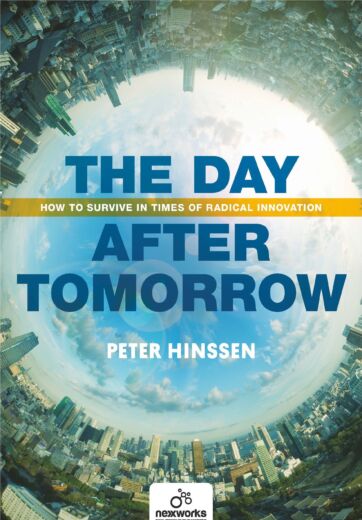As some of you may know, I have been deeply fascinated by two of the most intriguing mythical animals out there: the unicorn and the phoenix. We all know about the unicorns: those privately held start-up companies – like Airbnb, Didi and Coursera – which are valued at over $1 billion and seem to be defying the laws of physics and gravity. In fact, most of us are probably a bit tired of hearing about them. Personally, I find phoenixes a lot more interesting (which is why I am currently writing a book about them): those large corporates that are able to reinvent themselves in a permanent manner and that keep rising from their own ashes. Companies like Walmart, Disney, Lego, McDonalds, Microsoft or IBM that keep finding new ways of pleasing (new) customers, and are thus able to stay relevant.

That’s one of the reasons why I am so excited that we are collaborating with Solvay’s Global Head Agile Working, Digital HR, and HR Director Bruce Fecheyr-Lippens on our next ‘Work in Progress Tour ‘(about the future of work and organizing innovation). And why I invited him for a ‘nexxworks Innovation Talks’ podcast conversation about how Solvay is able to stimulates innovation and collaboration. Because in such a ‘slow’ industry like that of chemistry, in a company with over 25.000 employees all over the world, innovation is a lot harder (and more telling) than in an agile unicorn start-up.
One of the most interesting accomplishments of Bruce and his team is the internal – LinkedIn-like – collaboration tool named ‘You’ that they were able to develop in less than 6 months. He first investigated the possibility of buying an out of the box tool from ‘big’ vendors, but he felt that they were all inadequate, at least for what they were trying to accomplish at Solvay. I loved how he put it: “they were all ERP-like HR tools, and we were looking for an employee-centric tool to enable collaboration. These are two very different things.” He also investigated more agile solutions, from start-up vendors, but they tended to be too niche and specific, while Bruce felt he needed something more holistic. So he and his team decided to build it themselves, and fast, which is very unique for such a large company like Solvay: “We were able to create a tool for employees, by employees. Which is a lot more efficient and relevant than using an impersonal out of the box solution”.
What’s so unique about Bruce is that he does not have a hard-core HR-background but that he is such a strategic thinker, with a very firm understanding of technology. No surprise, then, that he feels that there tend to be “too many (purely) HR people in HR”. This is how he put it: “If you want to innovate and disrupt in HR, then you need a fresh outsider perspective. Traditional HR-people will probably have more difficulty in seeing exciting new possibilities AND they will be scared to change their jobs and leave their comfort zones. Not much exciting and new can come from that. Innovation lives at the intersection between talents, jobs, departments and industries and that’s why I truly believe that you need more non-HR people in HR.” Bruce also believes that HR should not just be the business of HR inside the company: leaders - like the COO, the CFO or CEO - need to take a firm grasp of it and give HR both the tools and the funds they need to take the employee experience, the collaboration and the innovation to a much higher level. “It’s imperative that HR needs to take more risks to reinvent itself, instead of staying in its comfort zone, like it tends to happen in so many companies. You need to experiment with HR, just as much as you need to experiment with customers, business models, markets, products and services.”
